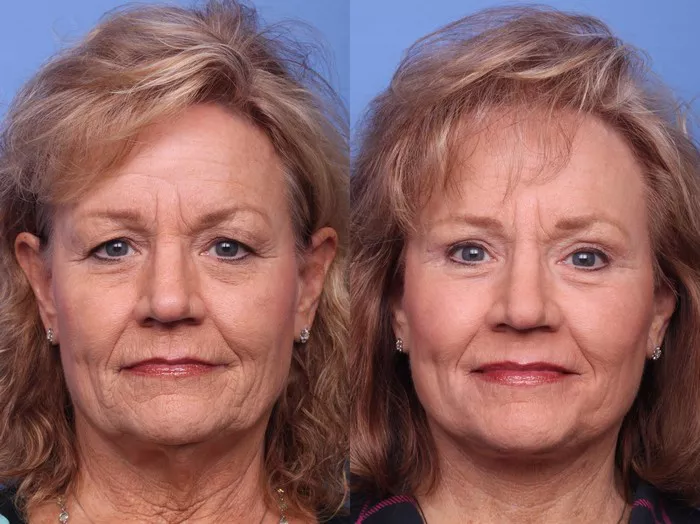Upper eyelid surgery, also known as upper blepharoplasty, is a cosmetic procedure aimed at improving the appearance of the upper eyelids by removing excess skin and addressing sagging or drooping. If you’re considering upper eyelid surgery, one common concern you may have is the duration of post-operative swelling. Swelling is a natural part of the healing process, and understanding its timeline can help you prepare for the recovery period. This article aims to provide insights into how long swelling typically lasts after upper eyelid surgery and tips for managing it.
Understanding Swelling After Upper Eyelid Surgery
Swelling is a normal response of the body to surgery. During upper eyelid surgery, the delicate tissues around the eyes are manipulated, leading to fluid accumulation and inflammation. Swelling can vary from person to person, and its duration depends on several factors, including individual healing characteristics, the extent of the surgery, and how well post-operative care instructions are followed.
Timeline of Swelling After Upper Eyelid Surgery
While each person’s experience may vary, the following is a general timeline of swelling after upper eyelid surgery:
-
Immediate Post-Operative Period (Days 1-2)
Swelling is typically at its peak during the first 24 to 48 hours after surgery. The upper eyelids may appear puffy and swollen during this time. Cold compresses and prescribed medications can help minimize swelling and discomfort.
-
Subacute Phase (Days 3-7)
In the following days after surgery, the swelling gradually subsides. However, some degree of puffiness and mild swelling may still be present. Bruising around the surgical area may also become more apparent but will gradually fade.
-
Weeks 2-3
Swelling continues to diminish during this period, and most patients notice a significant improvement in the appearance of their upper eyelids. However, some residual swelling may persist, especially in the morning or after prolonged periods of physical activity.
-
Weeks 4-6
By this stage, the majority of swelling should have resolved, and the upper eyelids will appear more natural and defined. However, it’s important to note that the complete resolution of swelling can vary from person to person. Some individuals may experience residual swelling for several months, although it is typically minimal and not noticeable to others.
Managing Swelling After Upper Eyelid Surgery
While swelling is a normal part of the recovery process after upper eyelid surgery, there are several strategies you can employ to help manage and minimize it:
-
Follow Post-Operative Care Instructions
It’s crucial to carefully follow the post-operative care instructions provided by your surgeon. These instructions may include applying cold compresses to the surgical area, taking prescribed medications, and avoiding activities that can increase swelling, such as strenuous exercise.
-
Apply Cold Compresses
Cold compresses can help reduce swelling and provide relief. Use a clean, soft cloth or ice pack wrapped in a thin cloth and apply it gently to the upper eyelids for short periods of time, as recommended by your surgeon. Avoid applying ice or direct pressure to the surgical site.
-
Keep Your Head Elevated
Keeping your head elevated while resting or sleeping can help minimize swelling. Prop yourself up with extra pillows or use a reclining chair to keep your head elevated above your heart.
-
Avoid Strenuous Activities
Engaging in strenuous activities or bending forward can increase blood flow to the surgical area and potentially worsen swelling. It’s important to avoid activities such as heavy lifting, vigorous exercise, and activities that involve straining or bending for the recommended duration advised by your surgeon.
-
Stay Hydrated and Eat a Balanced Diet
Staying hydrated and maintaining a healthy diet can support the healing process and reduce swelling. Drink plenty of water and eat foods rich in nutrients, vitamins, and minerals to aid in recovery.
-
Patience and Rest
Swelling after upper eyelid surgery gradually resolves over time. Be patient with the healing process and allow yourself ample time to rest and recover. Avoid touching or rubbing your eyes, as this can potentially exacerbate swelling or cause complications.
When to Consult Your Surgeon
While swelling is expected after upper eyelid surgery, it’s important to stay vigilant and contact your surgeon if you experience any concerning symptoms, such as excessive pain, worsening swelling, severe bruising, or changes in vision. Your surgeon is the best resource to assess your progress and address any questions or concerns you may have during the recovery process.
Conclusion
Swelling is a normal part of the healing process after upper eyelid surgery. While each person’s experience may vary, swelling typically reaches its peak within the first 48 hours and gradually subsides over the course of several weeks. Following post-operative care instructions, applying cold compresses, keeping your head elevated, avoiding strenuous activities, maintaining a healthy diet, and being patient are key strategies for managing and minimizing swelling. If you have any concerns or experience unusual symptoms, consult your surgeon for guidance and reassurance. With proper care and patience, you can expect the swelling to gradually resolve, revealing the final results of your upper eyelid surgery.


